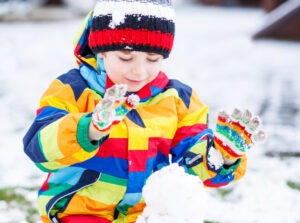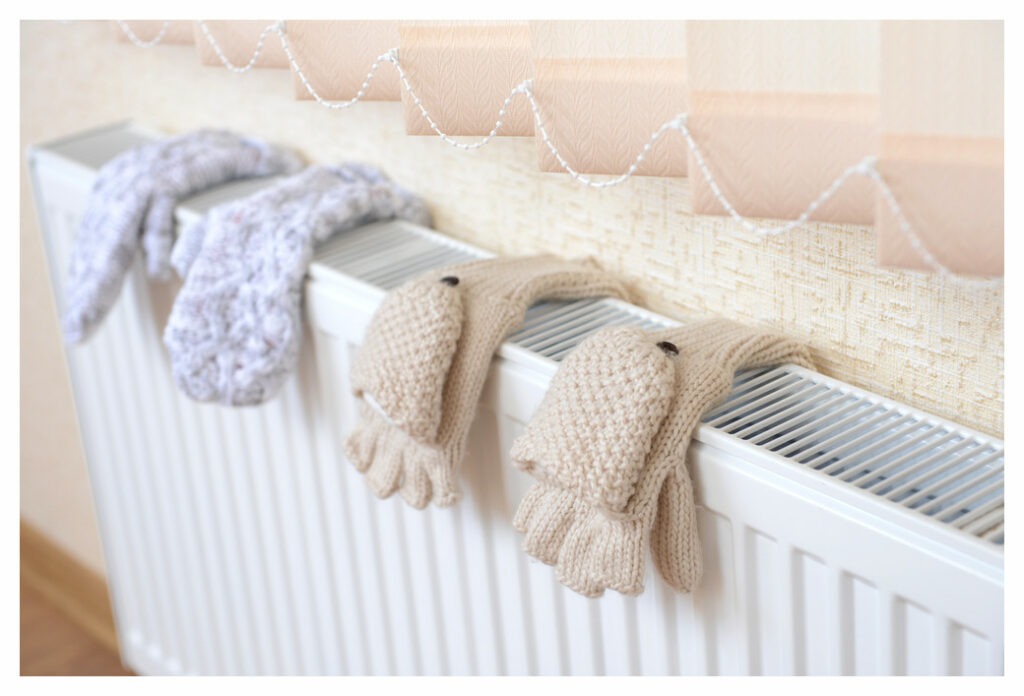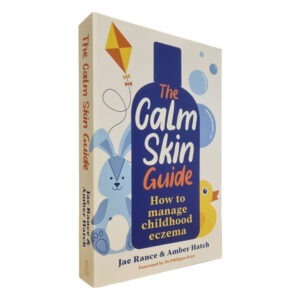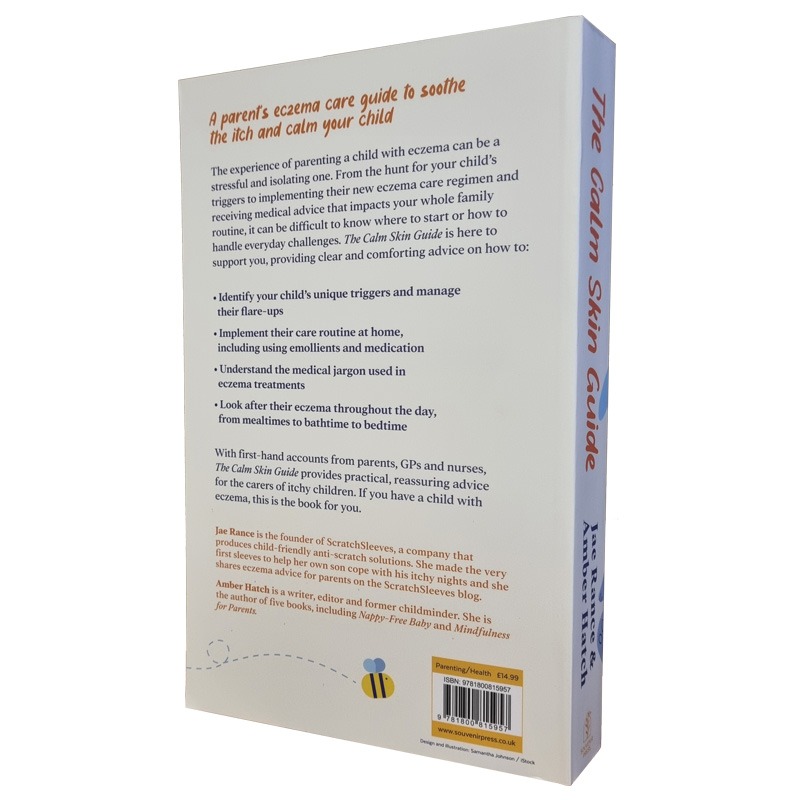Managing your child’s eczema in winter



The colder winter weather can aggravate eczema, and with the need to layer up the clothes, you may find you’re facing a particularly difficult few months. Adding gloves to itchy, painful fingers or trousers to scratchy legs isn’t easy for parents of children with eczema. So how do you keep your child warm without making their eczema worse in winter? In this article we explore why eczema tends to react to the cold and we offer some helpful tips and advice for managing your child’s eczema this winter.
Why does eczema get worse in winter?
It’s not unusual to find that some children’s eczema almost disappears during the summer, only to rear its ugly head again when the weather becomes chillier. Lots of little ones are vulnerable to winter eczema, particularly between the fingers and behind the knee-caps, though all areas of the body can be affected. Often children who seem to have ‘outgrown’ their eczema still find they are susceptible to outbreaks in the winter.
No-one really knows the true causes of eczema, however we do know there are certain things that will trigger the condition – extreme temperatures, either hot or cold, being a very common cause of flare-ups.
It’s possibly aggravated by the fact that during the winter we’re exposed to heating, and the air tends to be drier, so the skin becomes drier and more sensitive. As we all know only too well, once a child begins to itch, the eczema becomes worse and the itchier the child becomes – it’s a vicious cycle and can be distressing to witness.
How to prevent eczema in winter?
If we could all spend the winter months on the southern coast of Spain, perhaps all our eczema problems would be solved. Assuming this isn’t a practical solution for most people, there are a number of alternative ways to manage the condition.
Keep the skin hydrated
Make sure your child drinks plenty of fluids and applies their emollient regularly. The National Eczema Society suggests changing your emollient for an ointment which may have a more nourishing effect in winter.
If your child is old enough to play a part in managing their own eczema it can be helpful to keep a bottle of cream on their bedside table so that they remember to put some on in the morning and before they go to sleep. Another bottle on the kitchen windowsill can also serve as a helpful reminder during the day – it’s not a bad idea to get into the habit of applying some emollient after each hand-wash.
If your child suffers from eczema on the face, you may like to consider applying emollient before they go out as it can help to protect exposed skin. Vaseline is a good protector for the lips, and sunscreen for eczema with an SPF of 30 is a good idea for sunny days.
Keep an eye on the central heating gauge
You can’t change the temperature outside but you can stop your home from becoming too warm. Keep the temperature reasonably ambient at about 20°C – overheating your home will make the air drier. It may be helpful to consider buying a humidifier which can help to moisten the air. However, it’s important to clean a humidifier regularly as any build-up of mold or bacteria could cause an allergic reaction. Try to keep humidity to below 35% so discourage dust mites which like a humid environment.
Avoid hot baths
Hot water will also have a drying effect upon the skin as it strips the skin of its natural oils, so make sure your child’s shower or bath water is warm but not hot. According to the NHS guidance, you should keep bath or shower time short in winter – no more than 10-15 minutes – and only once within a 24-hour period. Also, be wary of washing hair too often as shampoo can aggravate eczema, especially when skin has been made more sensitive by the winter weather.
Try to get your child into the habit of applying emollient after bathing or any water-based activities.
Protect kids’ hands to avoid winter eczema on hands
Parents should encourage children to wear winter gloves for eczema for outdoors to protect hands from wind and cold damage, according to the Nottingham Support Group for Carers of Children with Eczema. However, it can be difficult to find gloves which don’t irritate eczema skin.
That’s why it’s a good idea to try to wear a pair of cotton gloves underneath your ordinary gloves or mittens. We’ve found this strategy more helpful than buying special outdoors gloves because it’s frustrating when they inevitably go missing. Having a few pairs of cotton under gloves in your drawer ready to use means you’re more likely to avoid contact with potentially irritating materials.
You may also like to invest in several pairs of outer gloves with waterproof shells so that you always have dry gloves available. Damp, cold gloves are almost as bad as no gloves at all. Use a piece of elastic or cotton tape to thread them through your child’s coat sleeves so they are less likely to go missing.

Remind your child to be extra thorough about drying their hands in the winter, especially between their fingers, as residual water and colder temperatures do not mix well on eczema-affected skin.
If you have older children who get involved in household chores like washing up or cleaning the car, get them a pair of small washing up gloves to protect their skin. If regular washing up gloves are too big, child-sized craft gloves may work better.
Choose clothing carefully
Autumn is a lovely time of the year but the chillier weather means we all have to start wrapping up in extra layers of clothing, and this can be problematic to eczema-affected skin. Because it’s likely you’ll be in your winter clothes until Easter, it’s worth investing in garments made of materials which are less likely to irritate eczema. Another discovery we made by chance is that ski-trousers and snow-suits aren’t just useful in the snow – they also work really well in the cold, damp British winters as the keep out both wind and wet (TK Maxx and eBay are good places to look if funds are tight).
Invest in eczema friendly under-clothing
Woollen clothing can be problematic, as can synthetic materials as they don’t allow the skin to breathe. We’ve found that the way to wear warm woolly jumpers in winter is to invest in soft, breathable materials to wear against the skin, such as long-sleeve cotton vests or t-shirts, as they act as a barrier between the jumper and the skin. Be careful to wash the layers which will sit on the skin in a detergent which doesn’t aggravate eczema – read our article on detergents and eczema here.
A couple of thinner layers is often better than one thick layer as you can more easily add or remove clothing to regulate your child’s body temperature – it’s best to try to avoid letting them get too hot. Our article on eczema friendly clothing has more useful tips and ideas.
Further information
We hope this article has given you lots of hints and tips to help lessen your child’s eczema this winter. If you need more information, take a look at the NHS, National Eczema Society and Nottingham Support Group for Carers of Children with Eczema websites.
- NHS – www.nhs.uk
- National Eczema Society – www.eczema.org
- Nottingham Support Group for Carers of Children with Eczema – www.nottinghameczema.org.uk
If you have a child under 2, take a look at our article on managing baby eczema in winter and read these article on managing chapped lips/chins or hands in winter.
Looking for more adult focussed information? Visit the blog on our sister site Tepso.co.uk here.
Here at ScratchSleeves, we don’t just share our experiences of bringing up an eczema child and favourite allergy friendly recipes, we also manufacturer and sell our unique stay-on scratch mitts and PJs for itchy babies, toddlers and children. We now stock sizes from 0-adult years in a range of colours. Visit our webshop for more information.
The Calm Skin Guide
Love our blog? It's also available in book format with:
- First hand accounts from parents & medical professionals
- Easy navigation
- Comprehensive index
- Additional material
Signed copies available at no extra cost
Written by:
Interesting article? Don't keep it to yourself...
Read next...
You may also find helpful...
Quick buy


Multi Buy Discount

Spend between £30 - £60 and save 5%
Spend between £60 - £120 and save 10%
Spend over £120 and save 15%
Discount automatically applied at checkout
No Quibbles Guarantee

ScratchSleeves abide by a no quibbles guarantee.
Free UK Postage

Free packing and postage on all UK orders. For overseas orders to Europe postage is from £3.50, to USA is £6.50 and to the rest of the world, from £3.75.






